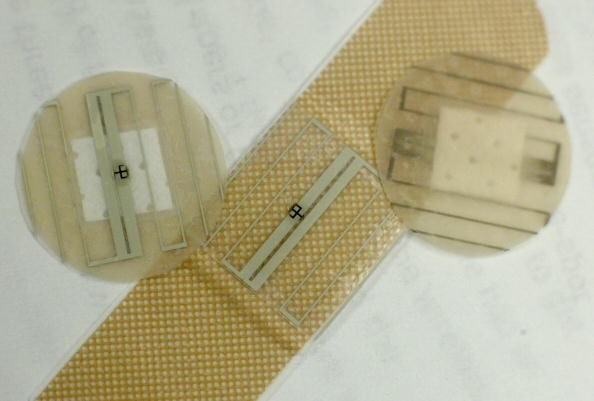Biosensors & Bioimaging

Biosensing and bioimaging facilitate the investigation of biological and pathological processes in living systems at the molecular level. A biosensor is a device used to detect the presence or concentration of a biological analyte, biological structure, or microorganism. Biosensors are found in bioelectronics, food and environmental monitoring, and biomedical applications to detect pathogens, food toxins, and biomarkers of diseases.
Biosensors have three main components: a recognition component that identifies the analyte and produces a signal, a signal transducer, and a reader to measure and quantify the signal received. Bioreceptors, such as antibodies, nucleotides, enzymes, or proteins, act as recognition molecules that bind or interact with a targeted analyte or biomarker. Signal transducers can function via many different physicochemical properties including electrical, electrochemical, optical, or magnetic outputs.
Bioimaging is an optical form of biosensing used to create non-invasive, visual representations of biological processes in cells, tissues, and anatomy for more accurate diagnosis and treatment of diseases.
Diagnostic imaging modalities for in vivo applications include X-ray, computed tomography (CT), magnetic resonance imaging (MRI) and fMRI, and positron emission tomography (PET). In vitro applications often include super-resolution, two-photon fluorescence excitation microscopy, fluorescence recovery/redistribution after photobleaching (FRAP), and fluorescence resonance energy transfer (FRET) technologies.
For more information read our Material Matters™ issue dedicated to bioassays and bioimaging.
Related Technical Articles
- Gold (Au) nanoparticles have tunable optical and electronic properties and are used in a number of applications including photovoltaics, sensors, drug delivery & catalysis.
- Quantum dots are tiny particles or nanocrystals of a semiconducting material with diameters in the range of 2-10 nanometers.
- Iron oxide (IO) nanoparticles consist of maghemite (γ-Fe2O3) and/or magnetite (Fe3O4) particles with diameters ranging from 1 and 100 nanometer and find applications in magnetic data storage, biosensing, drug-delivery etc.
- Properties, synthesis & applications of Graphene Quantum Dots explained. GQDs have advantages of nontoxicity, good solubility, stable photoluminescence & better surface grafting.
- See all
Related Protocols
To continue reading please sign in or create an account.
Don't Have An Account?